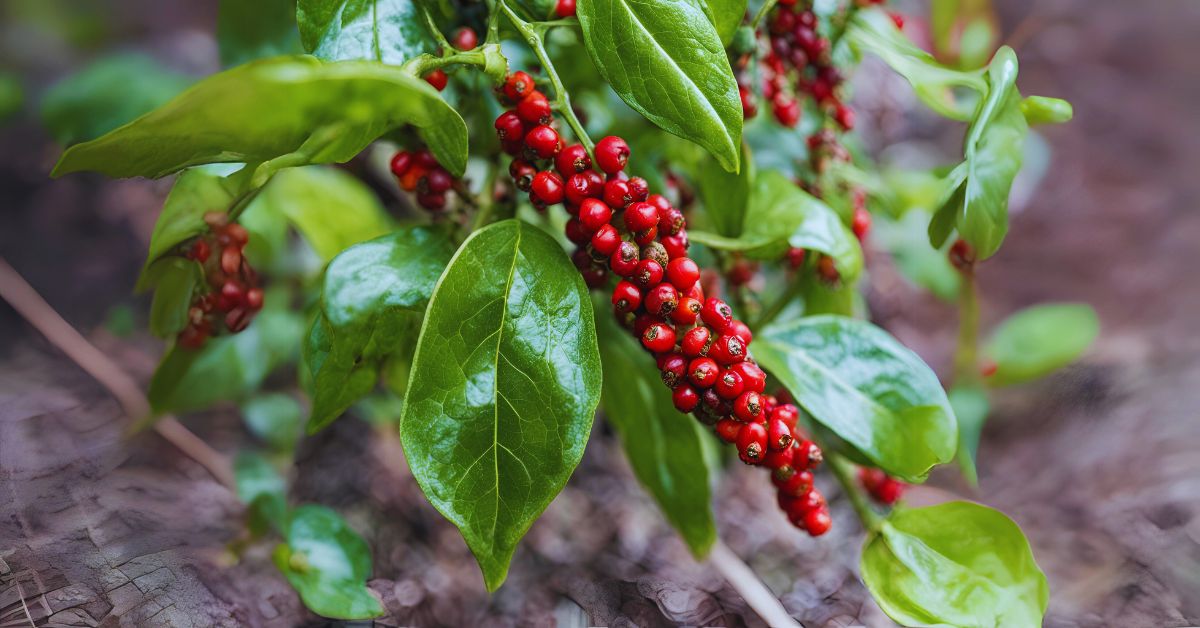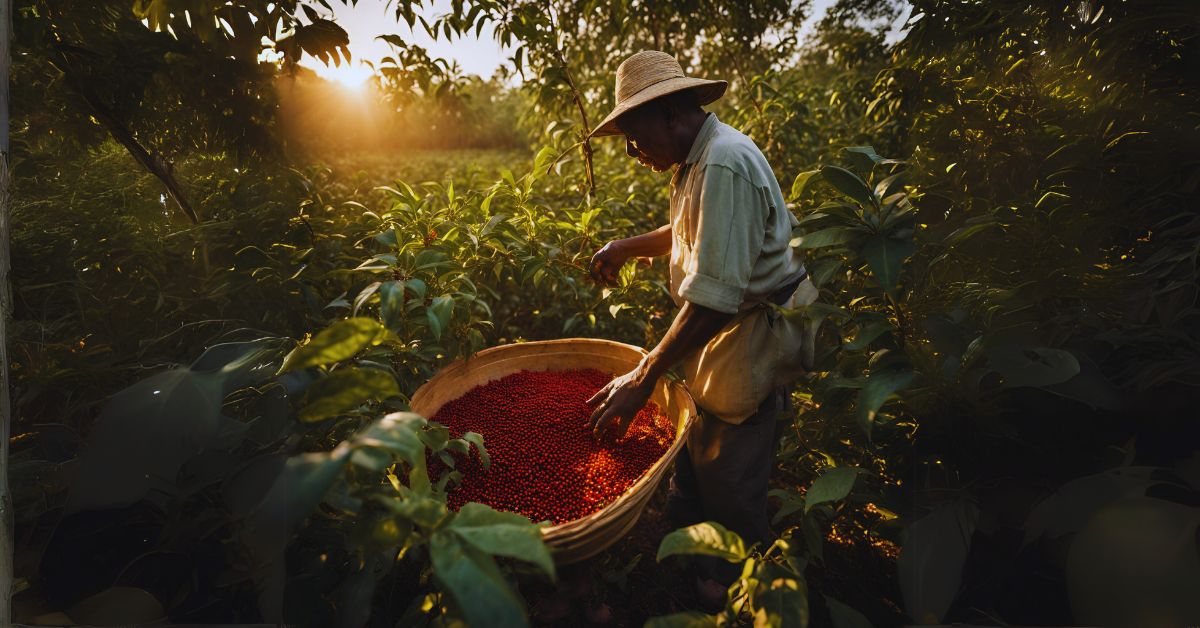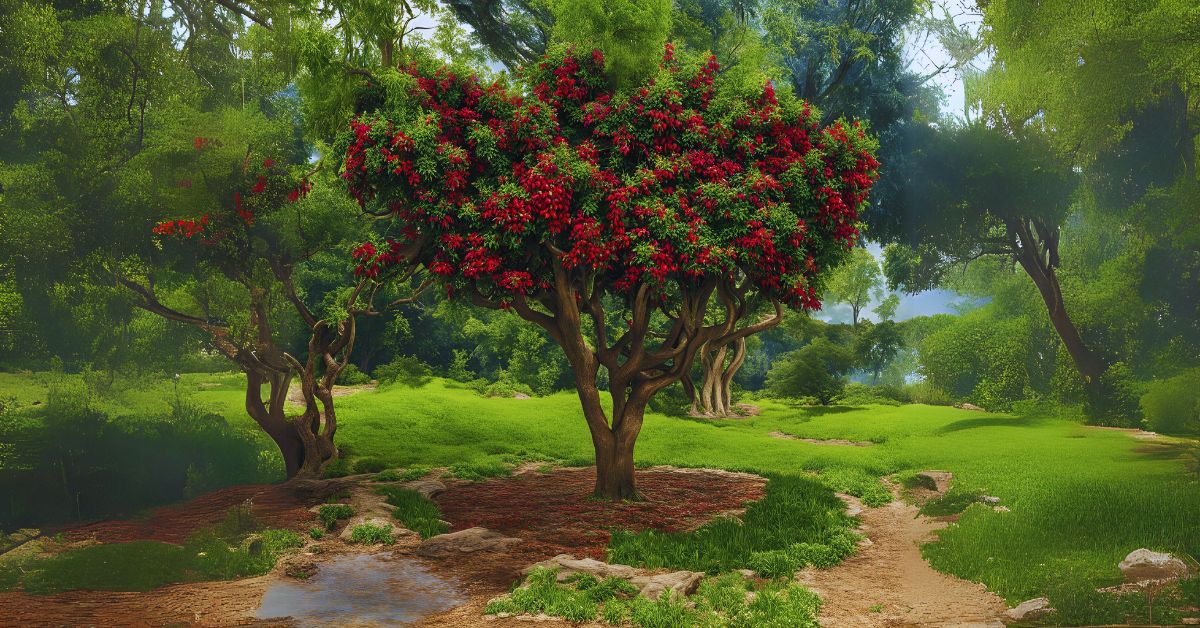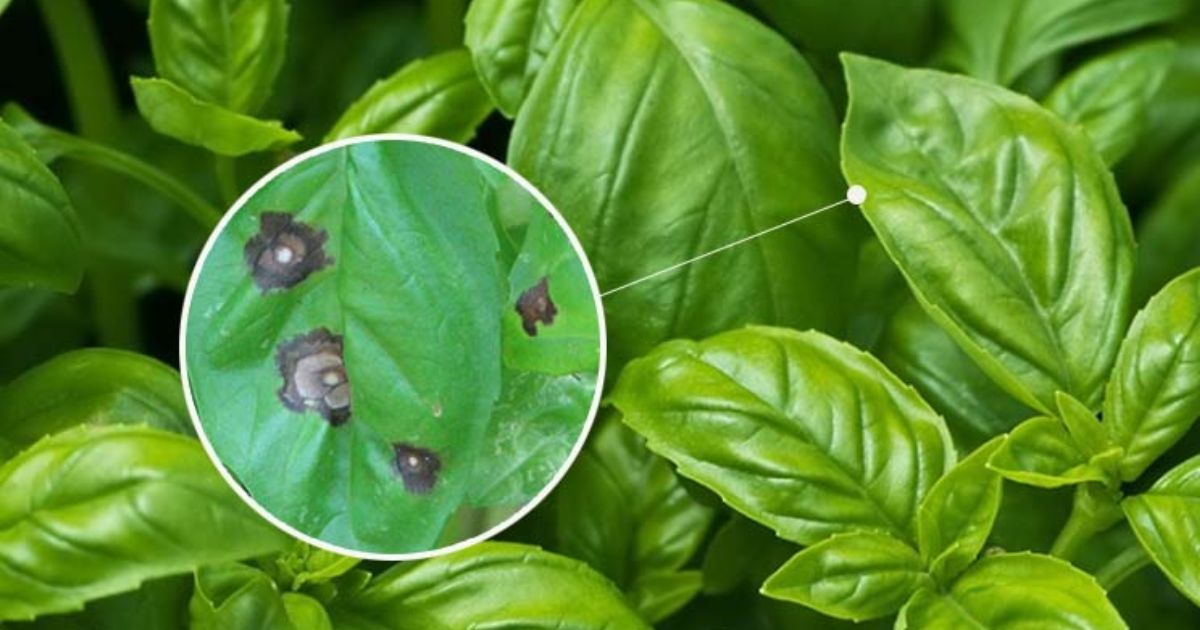Pink peppercorns come from a common tree known as the Peruvian pepper tree (Schinus molle) or the Arizona Brazilian pepper tree (Schinus terebinthifolius). These trees produce small, bright pink berries that resemble true peppercorns, which is why they’re called “pink peppercorns.” Unlike black or white peppercorns from the Piper nigrum plant, pink peppercorns are not actual peppers but have a similar spicy and slightly sweet flavor.
What Do Pink Peppercorns Look Like?
Pink peppercorns are small, round, and bright pink to red. They are about the same size as black peppercorns but have a more delicate, papery skin. When dried, they maintain their vibrant hue, making them a popular choice for adding color to various dishes.
How does Peppercorns Grow and How are Peppercorns Grown?

The Peruvian and Brazilian pepper trees are evergreen and can grow up to 50 feet tall. They have drooping branches with feathery, compound leaves. These pirul tree produce clusters of small white flowers, eventually developing into the pink berries known as the pink pepper plant. The berries are harvested when they reach their characteristic pink color and are then dried for culinary use.
Where are peppercorns native to?
Pink peppercorns are native to South America, particularly the arid regions of the Peruvian Andes and parts of Brazil. Over time, these trees have been introduced to other parts of the world, including the United States, where they have become naturalized in states like Florida and California. In some areas, they are considered invasive due to their rapid growth and ability to outcompete native vegetation.
What do peppercorns look like and What does Pink Peppercorn Taste like?
Pink peppercorns have a unique flavor profile. They are less pungent than black peppercorns and offer a subtle peppery taste with sweet, fruity, and floral notes. This distinct taste makes them a versatile ingredient in various cuisines, adding flavor and visual appeal to dishes.
What Is a Pepper Tree?
A pepper tree types refers to any tree that produces pepper-like berries. In the case of pink peppercorns, the term specifically refers to the Peruvian pepper tree (Schinus molle) and the Arizona Brazilian pepper tree (Schinus terebinthifolius). These trees belong to the cashew family and are known for their ornamental value and the spicy berries they produce.
How do Peppercorns Grow—Here’s How to Forage Them
Foraging for pink peppercorns can be fun and rewarding, especially in areas with abundant trees. However, to ensure safety, it’s essential to correctly identify the pirul tree. Look for trees with drooping branches, feathery leaves, and clusters of pink berries. Once identified, gently pluck the ripe berries without damaging the tree. After collecting, spread the berries to dry in a cool, shaded area. Once dried, they can be stored in airtight containers and used in various culinary applications.
What Can You Do With Pink Peppercorns?
Pink peppercorns are versatile in the kitchen. Their sweet and peppery flavor complements a variety of dishes. They can be crushed and added to spice rubs for meats, sprinkled over salads for a burst of color and flavor, or infused into oils and vinegar. Additionally, pink peppercorns pair well with fruits and desserts, adding a unique twist to sweet dishes.
Benefits of Caring for the Elderly at Home

Caring for elderly family members at home offers numerous benefits. It allows them to remain in a familiar environment, enhancing their emotional well-being and quality of life. Home care also provides personalized attention and can be more cost-effective than institutional care. Moreover, family members can ensure their loved ones receive the care and companionship they need, fostering stronger familial bonds.
Some Information About Pink Peppercorn
It’s important to note that while pink peppercorns are generally safe for consumption, they belong to the cashew family. It means individuals with nut allergies, particularly to cashews or pistachios, should exercise caution, as there have been reports of allergic reactions. Additionally, in large quantities, pink peppercorns can cause digestive discomfort. As with any spice, moderation is key.
Where is the Pepper Plant Tree Found?

Native to Northern Peru’s high Andean desert, the Peruvian pepper tree is an evergreen with a weeping canopy of branches.
It has spread worldwide and is now grown for its spices. In some places, it is even regarded as a dangerous weed, taking over forests and coastal areas in Australia and savannas and grasslands in South Africa.
Native to the Southwest (Arizona and Southern California), Northern and Central California, Texas, Louisiana, Florida, Hawaii, and Puerto Rico, Peruvian pepper thrives in hotter conditions.
Pepper plant tree, which I first saw in Southern California, grow wild throughout the Palos Verdes Peninsula and the foothills and interior valleys of Greater Los Angeles.
I have red pepper tree berries from Piru Creek in Northern Los Angeles County, my friend’s backyard in Long Beach, and my old backyard in the South Bay. Rows of pepper trees even line the streets surrounding Anaheim’s Disneyland!
The foliage and blossoms of Peruvian pepper trees have a faint spicy scent. The branches are dotted with little, fragile flower buds in the spring and summer. Reddish-pink berries ready for harvest replace the flowers throughout the fall and winter.
The end of the year is a great time to begin foraging because Peruvian pepper trees ripen in the fall and winter!
Identification
With a broad canopy and a weeping shape, the pink peppercorn tree is a lovely evergreen that can reach a height of 12 meters. It grows tall branches, and its red-pink berries are a sweet fruit for a garden.
Leaves
The long, fluffy, compound leaves, composed of fifteen to forty-one leaflets, dangle from the drooping branches and are positioned alternately on the stem.
Flowers, Fruit, and Seeds
In the spring, clusters of white flowers bloom, giving rise to bunches of tiny, reddish-pink fruits that dangle from the tree. When in full color, the grape-like bunches, which may reach a length of 30 cm, are remarkably visible. As they dry, these fruits turn cream-yellow and remain on the tree for months. The peppercorn is a tiny, spherical, brown-black seed 3–5 millimetres across and found inside each berry.
Pink Peppercorns as Food
The tree’s fruit is frequently marketed as “pink peppercorn,” commonly used in recipes instead of ordinary pepper—which is unrelated. It can be added to a wide range of savory and sweet recipes as a spice. It is essential to completely dry the seeds first because they are pretty oily and problematic to crush when fresh. I adore the berries’ flowery flavor and use them sparingly as a spice when I cook (it’s hot). My wife blends them with dates, cocoa, and almond flour to make popular energy balls that we serve at significant events or festivals, and I add them as a spice to roasted potatoes.
Alcoholic drinks are made in Mexico by grinding the fruit, combining it with agave juice, and then fermenting it. To create a limited-edition gin using wild-harvested botanicals, I worked with Sydney-based Archie Rose Distillery to distill pink peppercorns.
Please be aware that the berries should be treated like pepper; therefore, they should only be consumed in small amounts or used as a spice.
Medicinal Uses
Because of its antibacterial and antiseptic qualities, S. molle was used in traditional medicine to treat various wounds and infections. Recent research in mice may support its antidepressant benefits, and it has also been used as a diuretic and antidepressant for toothaches, rheumatism, and menstrual disorders. Additionally, it has been hypothesized that S. molle’s insecticidal qualities make it a viable option for pest control in place of artificial chemicals. In Mesoamerican traditional rites, fresh green leaves in bunches are used shamanically for blessings and purification. What to Plant in Fall
Conclusion
Pink peppercorns come from a standard tree and offer a delightful blend of sweet and peppery flavors, making them a unique addition to various dishes. Whether foraging them yourself or purchasing them from a store, they can elevate your culinary creations with taste and visual appeal. However, always be mindful of potential allergies and consume them in moderation to fully enjoy their benefits.





